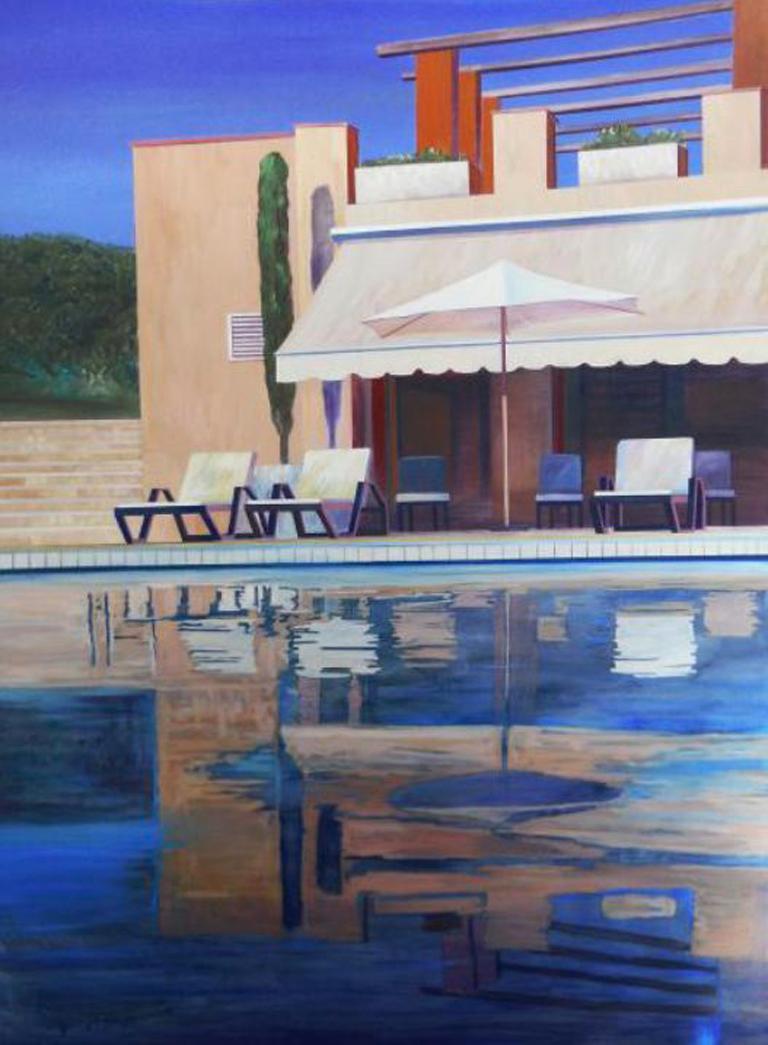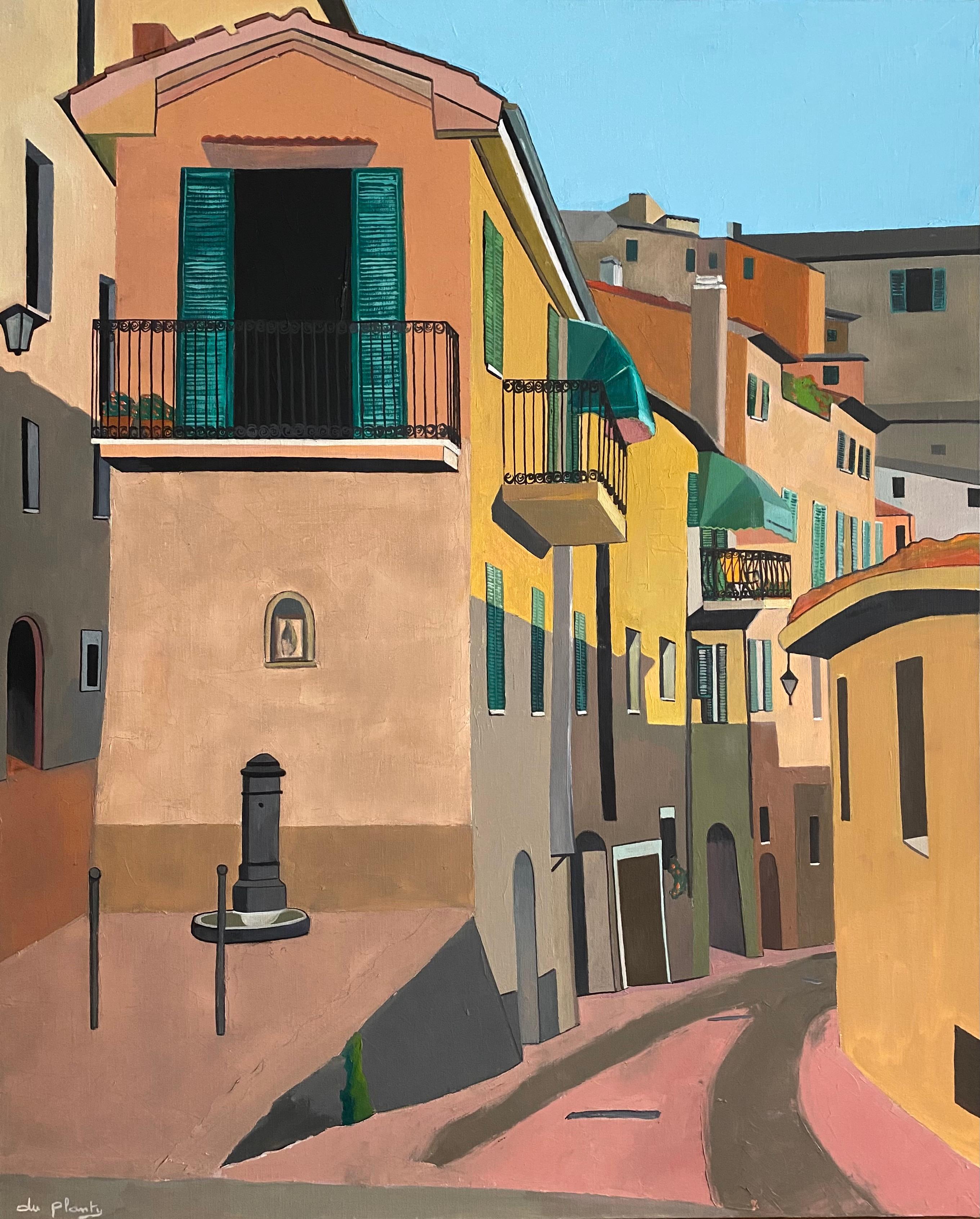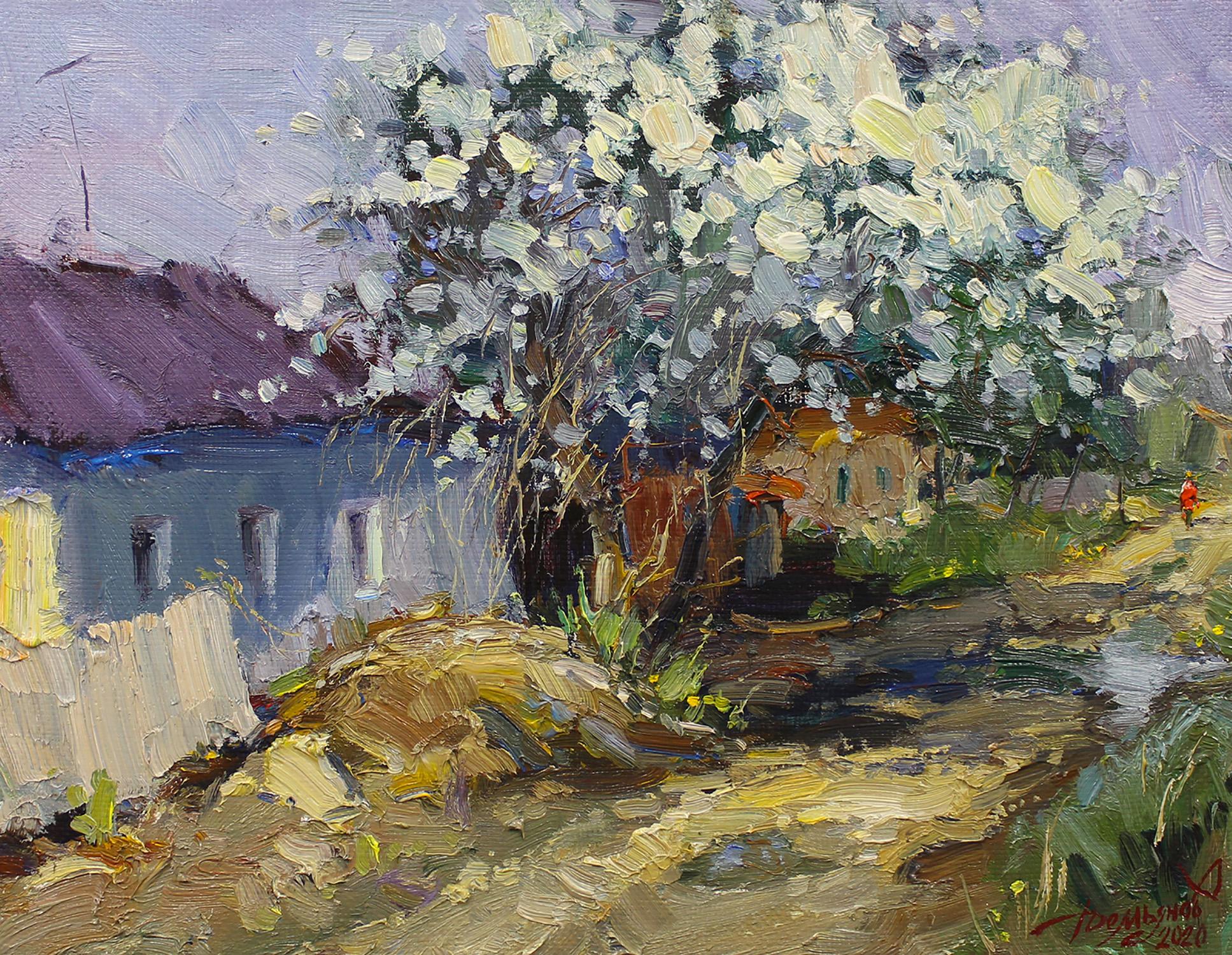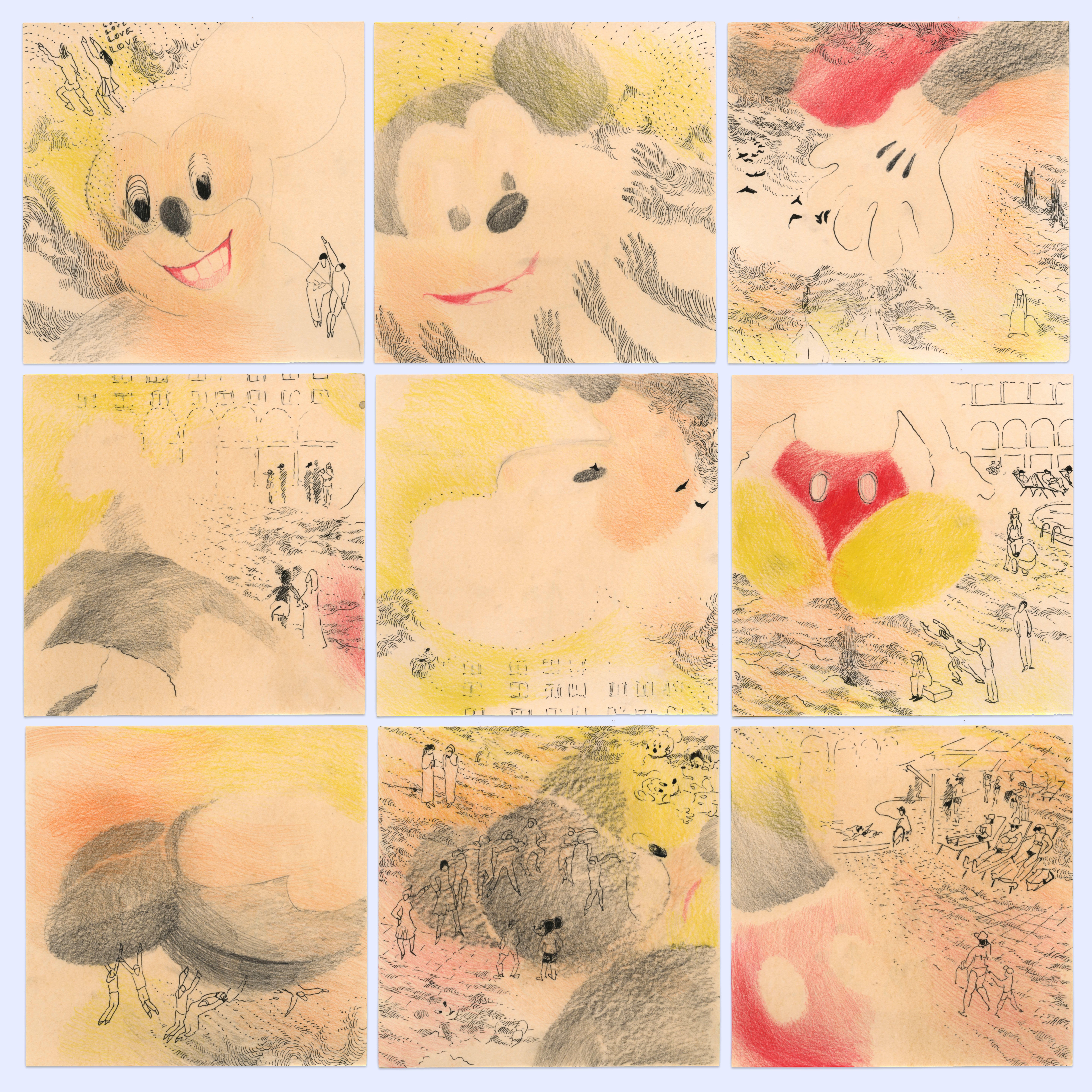Items Similar to Carlos Hernández Guerra, Caligrafía de Llano, Oil on canvas, 2012
Want more images or videos?
Request additional images or videos from the seller
1 of 14
Carlos Hernández GuerraCarlos Hernández Guerra, Caligrafía de Llano, Oil on canvas, 20122012
2012
About the Item
The artwork is signed and dated on the front.
Carlos Hernández Guerra
Born in El Callao, state of Bolívar, in 1939.
He studies at the School of Plastic and Applied Arts of Caracas in 1955-59, with such teachers as: Rafael Ramón González, Marcos Castillo, Pedro Angel González, Juan Martín Durbán, Juan Vicente Fabbiani and Alejandro Otero. In 1959 he is granted the Rome Prize of the 20th Venezuelan Official Art Salon. He travels to Paris in 1960, to study at the Higher School of Fine Arts of Paris, while taking simultaneous courses in Art Sociology at La Sorbonne University under the prestigious professor Pierre Francastel. In 1960 he obtains the Antonio Esteban Frías Prize, Official Art Salon, Caracas, and in 1961, the First Prize of the Annual Golden Fish Salon, Caracas. After returning from Paris, in 1962-64, he is incorporated to the teaching staff of the Armando Reverón School of Plastic Arts of Barcelona. In 1963 he participates in the “Three Awarded Young Men” show at the Mendoza Hall. Along with Manuel Espinoza, he is co-founder of the Experimental Art Center (CEA) of the University of the Andes (ULA), where he teaches drawing and painting and heads the center of painting technology from 1964 to 1968. In 1968 he enters the State School of Fine Arts of Berlin, in Germany, under Professor Hans Trier. In 1972 he takes part in the “Latin American Artists” exhibition carried out at the Museum of Modern Art of Paris. In 1973, he becomes a member of the teaching staff of the Cristóbal Rojas Art School while also teaching drawing at the Neumann Institute in Caracas. In 1977, along with Alirio Palacios, he represented Venezuela at the 14th Sao Paulo Biennial. In 1980 he wins the Arturo Michelena Prize at the Arturo Michelena Salon, Valencia. He joins efforts with artists Ana Mercedes Hoyos, Galaor Carbonell and José Antonio Quintero to present an exhibition in 1981 at the National Art Gallery entitled “The freest landscape.” In 1984, he and Alirio Palacios represent Venezuela at the 1st Havana Biennial, House of the Americas, Cuba; those pieces are currently at the Wilfredo Lam Museum. His artistic career includes numerous collective exhibitions locally as well as in different countries of Latin America and Europe.
“…When the hills are devastated by the wrecking fury of progress, when there are no more bamboos or wild plants or prairies to disorganize this landscape, the oeuvre will remain as testimony of something which was real and perhaps the memory of our horizon…” Carlos Hernández Guerra
Throughout his career several stages can be pinpointed. From 1961 to 1968 his work is characterized by the violence of the brushstroke on the canvas, with color and textures playing a fundamental role, the use of the technique of frottage, plus a free, nervous, agile brushstroke, as in the black series based on zoomorphic sequences: bats, skull.
From 1968 to 1973 he develops an engaged figuration, shaded by pop art influences; he carries out meticulous figures of a photographic realism, taken from journals of a historic period fully immersed in violence. The artist manages to combine in the same pictorial plane the real world with a painstaking expressionist and abstract outline.
In his third stage there is the revelation of the horizon which he uses as an abstract symbol; in the foreground of his landscapes scrubs and bushes are drawn with gestural brushstrokes conforming a natural reality. A smooth outline contrasts with the nervous line and vertiginous motion in the foreground, where he represents bushes, fences, barbed wires, and the like.
Hernández Guerra was never fully abstract, not even in his informalist stage, in the sense of obliterating all the references to things. There is always some sort of connection with them, and this enables him to overcome the purely automatic phase of gesture and its abstract conditioning. He seeks a synthesis of the emotional and the rational starting with an evolution which for Hernández Guerra goes from abstract painting based on the driving pulse of gesture to the broad, programmed landscapes which burst in the 1980s and that we could define as organic neo-landscapism, to use a term coined by María Elena Ramos in her dissertation on the work with which our painter participated in the Sao Paulo biennial.
In general, H. Guerra’s painting points almost indefectibly toward a compositional model which conjugates well-balanced, well-built parts as a link with reality and an eroded area where lines and colors altered by the driving pulse produce a disruption of order, H.G. became interested in the landscape thematic during his journeys to the Aragua valleys by the end of the 1970s. the line of the horizon becomes not only the axis of the composition from the point of view shared by the painter and the spectator, but also as a separation in a dynamic field, in depth, moving forward in perspective, and a neutral plane which retains the composition and projects it forward like a screen. He assumes the (scarcely recognized) task of renewing the genre and installing it in the scenery of his paintings located in remote places in the middle of the immense vegetable plains stretching across the south of Venezuela, locations which remained unexploited or untreated or with little or no precedents or tradition among us, The masters of the Fine Arts Circle were creators of a prestigious landscaping style.
They and their followers focused on making such an exhaustive record of the Caracas valley. that it can be said that they seized it and depleted the subject. Very seldom, only when they painted the mountain from the southern hills, did they employ the cavalier perspective, H. G.’s motivations differ not only from all the traditional ways to recreate the landscape, but also from more updated and audacious attempts carried out during the 1970s in order to renew the genre.
All this makes him an eccentric creator in the history of our painting regarding the landscape. His formulation of a new landscape implied the reformation of the notions received from tradition… H.G. works from images reproducing an aspect of nature so carefully transferred to the painting that we can identify the geographical features of the place and even the region where it is located. It is the landscape observed when the bare spaces of the central cordillera are surmounted. A specular landscape where the horizon is joined to the sky by a fragile, mottled line oriented toward the spectator’s point of view, in coincidence with the painter’s. There are no characters, no human life. no traces of animal presence. His method reminds us of the professional photographer’s. since his approach to landscape has a rather ritualistic character… However, for H. G., the photograph is merely an element of the process. The painting does not faithfully reproduce the photograph, since the intention is to reconstruct the subject, and as such the resulting image consists of a reinvented summary of general impressions reported by documentation. The panting in itself is an autonomous reality. The sudden perception of the image of a frozen time.
“A landscape about whose memory, recorded in the picture, only the landscape itself can comment”. Juan Calzadilla, “From the sign to the organic landscape.”
- Creator:Carlos Hernández Guerra (1939, Venezuelan)
- Creation Year:2012
- Dimensions:Height: 51.1 in (129.8 cm)Width: 63.7 in (161.8 cm)
- Medium:
- Movement & Style:
- Period:
- Condition:
- Gallery Location:Miami, FL
- Reference Number:1stDibs: LU161328872422
About the Seller
5.0
Vetted Seller
These experienced sellers undergo a comprehensive evaluation by our team of in-house experts.
Established in 1989
1stDibs seller since 2021
Typical response time: 1 to 2 days
- ShippingRetrieving quote...Ships From: Miami, FL
- Return PolicyA return for this item may be initiated within 14 days of delivery.
More From This SellerView All
- Iganacio Iturria, Hstorias Cotidianas, Oil on Canvas, UndatedBy Ignacio IturriaLocated in Miami, FLThe artwork is signed on the front. One of the most recognized Uruguayan painters of his generation, Ignacio Iturria (Montevideo, Uruguay, b. 1949) is known for his surreal interpr...Category
2010s Contemporary Landscape Paintings
MaterialsCanvas, Oil
- Carlos Hernández Guerra, Chaparros de Guanipa, Oil on Canvas, 1984Located in Miami, FLThe artwork is signed and dated on the front. Carlos Hernández Guerra Born in El Callao, state of Bolívar, in 1939. He studies at the School of Plastic and Applied Arts of Caracas in 1955-59, with such teachers as: Rafael Ramón González, Marcos Castillo, Pedro Angel González, Juan Martín Durbán, Juan Vicente Fabbiani and Alejandro Otero. In 1959 he is granted the Rome Prize of the 20th Venezuelan Official Art Salon. He travels to Paris in 1960, to study at the Higher School of Fine Arts of Paris, while taking simultaneous courses in Art Sociology at La Sorbonne University under the prestigious professor Pierre Francastel. In 1960 he obtains the Antonio Esteban Frías Prize, Official Art Salon, Caracas, and in 1961, the First Prize of the Annual Golden Fish Salon, Caracas. After returning from Paris, in 1962-64, he is incorporated to the teaching staff of the Armando Reverón School of Plastic Arts of Barcelona. In 1963 he participates in the “Three Awarded Young Men” show at the Mendoza Hall. Along with Manuel Espinoza, he is co-founder of the Experimental Art Center (CEA) of the University of the Andes (ULA), where he teaches drawing and painting and heads the center of painting technology from 1964 to 1968. In 1968 he enters the State School of Fine Arts of Berlin, in Germany, under Professor Hans Trier. In 1972 he takes part in the “Latin American Artists” exhibition carried out at the Museum of Modern Art of Paris. In 1973, he becomes a member of the teaching staff of the Cristóbal Rojas Art School while also teaching drawing at the Neumann Institute in Caracas. In 1977, along with Alirio Palacios...Category
1980s Contemporary Landscape Paintings
MaterialsCanvas, Oil
- Carlos Hernández Guerra, Chaparro, Oil on canvas, 2015By Carlos Hernández GuerraLocated in Miami, FLThe artwork is signed and dated on the front. Carlos Hernández Guerra Born in El Callao, state of Bolívar, in 1939. He studies at the School of Plastic and Applied Arts of Caracas in 1955-59, with such teachers as: Rafael Ramón González, Marcos Castillo, Pedro Angel González, Juan Martín Durbán, Juan Vicente Fabbiani and Alejandro Otero. In 1959 he is granted the Rome Prize of the 20th Venezuelan Official Art Salon. He travels to Paris in 1960, to study at the Higher School of Fine Arts of Paris, while taking simultaneous courses in Art Sociology at La Sorbonne University under the prestigious professor Pierre Francastel. In 1960 he obtains the Antonio Esteban Frías Prize, Official Art Salon, Caracas, and in 1961, the First Prize of the Annual Golden Fish Salon, Caracas. After returning from Paris, in 1962-64, he is incorporated to the teaching staff of the Armando Reverón School of Plastic Arts of Barcelona. In 1963 he participates in the “Three Awarded Young Men” show at the Mendoza Hall. Along with Manuel Espinoza, he is co-founder of the Experimental Art Center (CEA) of the University of the Andes (ULA), where he teaches drawing and painting and heads the center of painting technology from 1964 to 1968. In 1968 he enters the State School of Fine Arts of Berlin, in Germany, under Professor Hans Trier. In 1972 he takes part in the “Latin American Artists” exhibition carried out at the Museum of Modern Art of Paris. In 1973, he becomes a member of the teaching staff of the Cristóbal Rojas Art School while also teaching drawing at the Neumann Institute in Caracas. In 1977, along with Alirio Palacios...Category
2010s Contemporary Landscape Paintings
MaterialsCanvas, Oil
- Carlos Hernández Guerra, Estelos, Oil on Canvas, 2015Located in Miami, FLThe artwork is signed and dated on the front. Carlos Hernández Guerra Born in El Callao, state of Bolívar, in 1939. He studies at the School of Plastic and Applied Arts of Caracas in 1955-59, with such teachers as: Rafael Ramón González, Marcos Castillo, Pedro Angel González, Juan Martín Durbán, Juan Vicente Fabbiani and Alejandro Otero. In 1959 he is granted the Rome Prize of the 20th Venezuelan Official Art Salon. He travels to Paris in 1960, to study at the Higher School of Fine Arts of Paris, while taking simultaneous courses in Art Sociology at La Sorbonne University under the prestigious professor Pierre Francastel. In 1960 he obtains the Antonio Esteban Frías Prize, Official Art Salon, Caracas, and in 1961, the First Prize of the Annual Golden Fish Salon, Caracas. After returning from Paris, in 1962-64, he is incorporated to the teaching staff of the Armando Reverón School of Plastic Arts of Barcelona. In 1963 he participates in the “Three Awarded Young Men” show at the Mendoza Hall. Along with Manuel Espinoza, he is co-founder of the Experimental Art Center (CEA) of the University of the Andes (ULA), where he teaches drawing and painting and heads the center of painting technology from 1964 to 1968. In 1968 he enters the State School of Fine Arts of Berlin, in Germany, under Professor Hans Trier. In 1972 he takes part in the “Latin American Artists” exhibition carried out at the Museum of Modern Art of Paris. In 1973, he becomes a member of the teaching staff of the Cristóbal Rojas Art School while also teaching drawing at the Neumann Institute in Caracas. In 1977, along with Alirio Palacios...Category
2010s Contemporary Landscape Paintings
MaterialsCanvas, Oil
- Carmelo Niño, El Rapto, Acrylic on Canvas, 2019By Carmelo NiñoLocated in Miami, FL"El rapto" is a painting by Venezuelan artist Carmelo Niño (b. 1951). Since he first appeared in the local scene, with his early individual exhibitions at...Category
2010s Contemporary Landscape Paintings
MaterialsCanvas, Acrylic
- Alirio Palacios Paisaje azul, 1997, Natural pigments on paper mounted on woodBy Alirio PalaciosLocated in Miami, FLAlirio Palacios Paisaje azul, 1997 Natural pigments on paper mounted on wood 150 x 160 cm 59 x 62.9 in. The artwork is signed and dated on the fro...Category
1990s Post-War Figurative Paintings
MaterialsCanvas, Oil
You May Also Like
- Confort Pattern 069By Alex Hernández DueñasLocated in New Orleans, LAThe Cuban artist Alex Hernández Dueñas conceives the artistic creation from a trans-disciplinary perspective. His work has approached the universe of aesthetic preferences and the ...Category
2010s Contemporary Paintings
MaterialsCanvas, Oil
- Chinese Contemporary Art by Jia Yuan-Hua - Get LostBy Jia Yuan-HuaLocated in Paris, IDFArtwork sold with frame When we live in a big city alone, we may often feel helpless, and lonely. Huge pressures let us can not stop, busy with work, study and socialize. And deep inside, the yearning for a better life and the pure childlike innocence, can not consider, like a kite with broken wire. This painting use knife...Category
2010s Contemporary Landscape Paintings
MaterialsCanvas, Oil
- French Contemporary Art by Anne du Planty - MontepulcianoBy Anne du PlantyLocated in Paris, IDFOil on canvas Anne du Planty is a French artist born in 1953 who lives & works in Paris, France. Originally from North of France, she discovered light...Category
2010s Contemporary Landscape Paintings
MaterialsCanvas, Oil
- Russian Contemporary Art by Yuriy Demiyanov - WinterBy Yuriy DemiyanovLocated in Paris, IDFOil on canvasCategory
2010s Contemporary Landscape Paintings
MaterialsCanvas, Oil
- Russian Contemporary Art by Yuriy Demiyanov - On the Donskoi StreetBy Yuriy DemiyanovLocated in Paris, IDFOil on canvasCategory
2010s Contemporary Landscape Paintings
MaterialsCanvas, Oil
- French Contemporary Art by Rada Tzankova - Ciao Ciao Mickey MouseLocated in Paris, IDFAbout the artwork : acrylic paint on marouflaged paper mounted on canvas Rada Tzankova is a French artist born in 1975 who grew up in Bulgaria. She lives & works in Paris, France. S...Category
2010s Contemporary Landscape Paintings
MaterialsOil, Mixed Media, Canvas
Recently Viewed
View AllMore Ways To Browse
Marco De Marco
Bamboo Head
Ramon Oil Paintings Ramon
1960s German Landscape Painting
Bamboo Framed Painting
Oil Painting Central Valley
The Wreck
Golden Fish
European Landscape Painted Screen
Prairie Drawing
G S Hill
Mens Coin
The Reformation
Artist 1970s Mountains Landscape
Mountain Men Paintings
Latin American Art Figures
Golden Staff
1973 Bamboo




